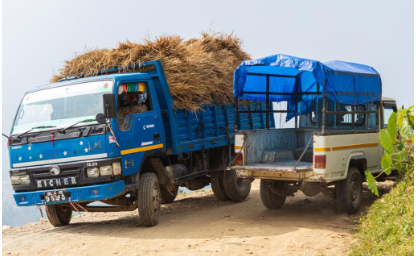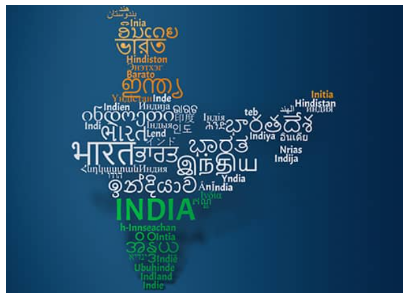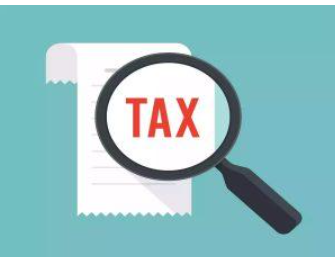Saturday, 2nd March 2024
Q3 Witnesses Accelerated GDP Growth at 8.4%
In News: In the October-December period of 2023, India experienced a notable upswing in Gross Domestic Product (GDP) growth, reaching a six-quarter peak at 8.4%.
National Statistical Office (NSO) Overview
- Formed in May 2019, NSO is the result of the merger between the National Sample Survey Office (NSSO) and the Central Statistics Office (CSO) under the Ministry of Statistics and Programme Implementation (MoSPI).
- NSO serves as the key agency for planned statistical development in India, setting norms, standards, and overseeing data collection, processing, and dissemination.
Key Highlights from NSO Data
- The second quarter growth estimate revised to 8.1%, and the first quarter revised higher to 8.2% from 7.8%.
- The Q3 GDP growth of 8.4% marks the highest in six quarters, with the last faster growth recorded in Q1 2022-23 at 13.1% (revised to 12.8%).
- RBI's Q3 growth projection at 6.5% contrasts with the actual 8.4%, led by double-digit growth in manufacturing (11.6%) and a 9.5% expansion in the construction sector.
Sectoral Performance
- Agriculture faces a contraction of 0.8% in October-December, while manufacturing and construction sectors show robust growth.
- Private consumption expenditure rises by 3.5% YoY, while government consumption expenditure decreases by 3.2%.
- Gross fixed capital formation, an investment indicator, records a substantial growth of 10.6% in the third quarter.
Key Concepts: GDP and GVA
- GDP, or Gross Domestic Product, represents the total monetary value of all finished goods and services produced within a country's borders in a specific time frame.
- It serves as a comprehensive measure of a country's economic health, encompassing private and public consumption, government outlays, investments, construction costs, and foreign trade balance.
- Gross Value Added (GVA) comes into play when GDP may not accurately depict the economic scenario.
- GVA measures the total value of goods and services produced in an economy, accounting for the value added to a product after deducting intermediate consumption.
- In India, GVA is measured at 'basic prices.'
GDP-GVA Relationship
- The relationship between GDP and GVA is expressed by the equation: GDP = GVA + Taxes on products by governments - Subsidies on products provided by the government.
- Generally, the absolute level of GDP exceeds GVA due to higher taxes received compared to subsidies spent by the government.
Source: IE
Article 371A and its Impact on Coal Mining in Nagaland
In News: Article 371A in Nagaland hampers coal mining regulation, especially in overseeing small-scale operations, due to its preservation of Naga customary law.
Understanding Article 371A of the Indian Constitution
- Article 371A, integrated through the 13th Amendment in 1962, provides special provisions for Nagaland, safeguarding religious, social practices, customary laws, and land-related matters.
- The Nagaland Legislative Assembly holds the authority to determine the applicability of parliamentary acts in these areas.
Rat-Hole Mining Regulation in Nagaland
- Nagaland possesses substantial but sporadic coal reserves totaling 492.68 million tonnes.
- The 2006 Nagaland Coal mining policy allows rat-hole mining due to the scattered nature of deposits, limiting operations to small-scale, individual landowner-based ventures.
- Rat-hole mining licenses are subject to stringent conditions, including limited mining areas, production caps, and environmental compliance.
- Despite regulations, instances of illegal rat-hole mining persist, posing safety and environmental concerns.
Article 371A's Influence on Mining Control
- Article 371A's grant of special rights complicates regulatory efforts, limiting the government's ability to enforce regulations on land and resource usage.
- Challenges arise in regulating small-scale mining operations, with individual landowners, due to the protective provisions of Article 371A.
Addressing Safety and Environmental Concerns
- Recent incidents in rat-hole mines underscore the risks associated with unregulated mining, emphasizing the need for effective safety measures and regulations.
- The Supreme Court and National Green Tribunal banned rat-hole mining in 2014, citing environmental degradation and threats to miners' lives.
Path Forward for Sustainable Mining
- Strengthen monitoring and enforcement measures to curb illegal mining activities, employing increased surveillance, inspections, and penalties.
- Conduct outreach programs to educate local communities about the adverse effects of unregulated mining and emphasize compliance with safety and environmental standards.
- Promote collaboration among government agencies, local communities, mining license holders, and environmental organizations to formulate comprehensive strategies for sustainable and responsible mining practices.
|
UPSC Previous Year Questions Mains (2017) Q. “In spite of adverse environmental impact, coal mining is still inevitable for development”. Discuss. |
Source: TH
Nitrogen Pollution
In News: Recent studies indicate that by 2050, approximately 33% of worldwide river sub-basins are expected to confront significant shortages of freshwater attributed to nitrogen pollution.
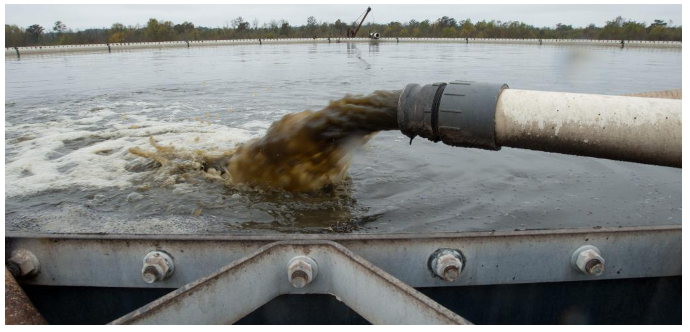
Overview of Nitrogen Pollution
- Nitrogen pollution denotes an excess of nitrogen compounds in environmental settings, primarily affecting water bodies like rivers and lakes. According to the United Nations Environment Programme (UNEP), approximately 200 million tonnes of reactive nitrogen, constituting 80% of the total, is annually lost to the environment.
Drivers and Sources of Nitrogen Pollution
- Agricultural Activities
- Increased use of nitrogen-based fertilizers contributes significantly to nitrogen pollution, as they can leach into groundwater or runoff into surface water bodies.
- Industrial Processes
- Manufacturing nitrogen-based chemicals and fertilizers releases nitrogen compounds into the environment.
- Combustion of fossil fuels in industries emits nitrogen oxides (NOx) into the atmosphere.
- Livestock Farming
- Livestock waste, mainly from manure and urine, contains nitrogen compounds such as ammonia.
- Improper management can lead to nitrogen runoff, contributing to water contamination and eutrophication.
- Biomass Burning
- Wildfires and burning of organic matter release nitrogen oxides (NOx) and nitrous oxide (N2O) into the atmosphere, contributing to air pollution.
Impacts of Nitrogen Pollution
- Eutrophication
- Excess nitrogen acts as a nutrient, leading to algal blooming and oxygen-depleted zones, adversely affecting aquatic life.
- Human Health Impacts
- Elevated nitrogen dioxide (NO2) levels in the air can worsen respiratory conditions.
- Nitrate contamination in drinking water poses health risks, particularly to infants.
- Ozone Depletion
- Nitrous oxide (N2O) released can deplete the stratospheric ozone layer, increasing health risks and harming ecosystems.
Government Initiatives Addressing Nitrogen Pollution
- Bharat Stage (BS VI) Emission Standards
- Stricter standards aim to reduce nitrogen oxide and particulate matter emissions from vehicles and industries.
- Nutrient-Based Subsidy (NBS)
- Encourages the use of controlled-release fertilizers, promoting efficient nutrient management.
- Soil Health Cards
- Provides farmers with soil nutrient information and customized fertilization recommendations.
- Nano Urea
- A patented fertilizer aimed at reducing conventional urea use and increasing crop productivity.
Strategies for Mitigating Nitrogen Pollution
- Sustainable Agricultural Practices
- Implementing precision agriculture and cover cropping to minimize fertilizer use.
- Improved Wastewater Treatment
- Upgrading infrastructure for proper treatment and disposal of industrial and urban sewage.
- Incentivizing Green Infrastructure
- Offering incentives for projects like green roofs and rain gardens to mitigate nitrogen runoff.
- Enhancing Public Awareness
- Raising awareness about responsible water and nitrogen management practices among farmers, industries, and the public.
|
UPSC Previous Year Questions Prelims (2013) Q. Which of the following add/adds nitrogen to the soil?
Select the correct answer using the codes given below: (a) 1 only Ans: (c) Prelims (2012) Q. Which one of the following sets of elements was primarily responsible for the origin of life on the Earth? (a) Hydrogen, Oxygen, Sodium Ans: (b) Prelims (2010) Q. Which features of some species of blue-green algae helps promote them as bio-fertilizers? (a) They convert atmospheric methane into ammonia which the crop plants can absorb readily (b) They induce the crop plants to produce the enzymes which help convert atmospheric nitrogen to nitrates (c) They have the mechanism to convert atmospheric nitrogen into a form that the crop plants can absorb readily (d) They induce the roots of the crop plants to absorb the soil nitrates in larger quantities Ans: (c) Mains (2018) Q. Sikkim is the first ‘Organic State’ in India. What are the ecological and economic benefits of Organic State? |
Source: ET
Leap Year
In News: In 2024, February 29th is recognized as Leap Day, an extra day inserted into the calendar during leap years, effectively extending the year to a total of 366 days.
Leap Year Definition
A leap year, characterized by 366 days instead of the usual 365, designates an additional day appended to February, effectively creating February 29.
Solar Calendar and Time Adjustment
- Solar Orbit and Regular Year
- A solar calendar signifies one complete Earth orbit around the Sun, taking about 365 days, 5 hours, 48 minutes, and 46 seconds.
- To simplify, a regular year is rounded to 365 days.
- Leap Year Correction
- To account for the extra time (rounded to six hours), 24 hours (one full day) are added every fourth year.
- Without leap years, the calendar would gradually desynchronize with the seasons.
- Preserving Calendar and Seasons
- The extra day prevents calendars from falling out of sync with seasons, crucial for cycles based on planting, harvesting, and other seasonal activities.
Evolution of Leap Years
- Julian Calendar Issues
- The Julian calendar's approximation of the solar year accumulated errors, leading to a misalignment of about 10 days by the 16th century.
- Calendar Reform by Pope Gregory XIII
- In 1582, Pope Gregory XIII initiated a reform, realigning the calendar by omitting ten days.
- The Gregorian calendar introduced a refined leap year rule, omitting three leap years every 400 years.
Mathematics of Leap Year
- Leap Year Criteria
- Leap years are multiples of four, such as 2016, 2020, and 2024.
- However, being a multiple of four does not guarantee leap year status.
- Gregorian Leap Year Rule
- The Gregorian rule states that a leap year must be divisible by four, with exceptions for end-of-century years (ending in '00'), which must be divisible by 400.
- For instance, 2000 was a leap year, but 1900 was not.
- Leap years include 2024, 2028, 2032, and 2036.
- Fine-Tuning the Calendar
- The additional rule, skipping leap years for centuries not divisible by 400, fine-tunes the calendar by correcting the slight overcompensation in the solar year.
- This adjustment ensures a closer alignment with the actual solar year, maintaining seasonal accuracy.
Source: IE
Exercise MILAN 2024
In News: The Sea Phase of Exercise MILAN 2024 concluded with a closing ceremony hosted aboard the INS Vikrant, signifying the conclusion of the maritime maneuvers off Visakhapatnam.
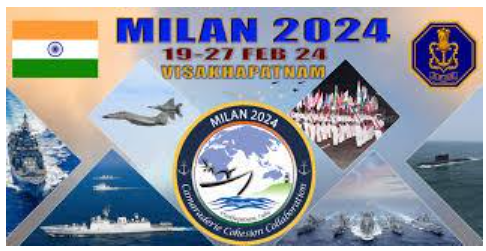
Overview of MILAN 2024
- Biennial Multilateral Naval Exercise
- MILAN 2024 represents the 12th edition of the biennial Multilateral Naval Exercise hosted at Visakhapatnam, under the Eastern Naval Command's jurisdiction.
- Objectives of MILAN
- The primary goal of MILAN is to foster professional interaction among friendly navies and cultivate expertise in conducting multilateral large-force operations at sea.
- Historical Background
- MILAN commenced in 1995 in the Andaman and Nicobar Islands, with the participation of navies from Indonesia, Singapore, Sri Lanka, and Thailand in its inaugural edition.
- 2024 Exercise Structure
- The exercise comprises two phases:
- Harbour Phase: Involving activities such as the International Maritime Seminar, city parades, tech exhibitions, expert exchanges, youth officer gatherings, and sports events.
- Sea Phase: Featuring the active participation of ships and aircraft from friendly nations, along with units from the Indian Navy, including carriers.
- The exercise comprises two phases:
- The International Maritime Seminar of MILAN 2024 had the theme 'Partners across Oceans: Collaboration, Synergy, Growth.'
Recent Developments in the Indian Navy
- Commissioning of New Ships
- INS Vikrant: India's inaugural indigenously-built aircraft carrier, marking a significant stride towards self-reliance in defense manufacturing.
- INS Mormugao: A stealth guided-missile destroyer, a part of Project 15B aimed at enhancing anti-surface warfare capabilities.
- INS Vagir: A new Kalvari-class submarine, reinforcing the Navy's underwater capabilities.
- INS Sandhayak: The first Survey Vessel Large (SVL) ship recently commissioned into the Indian Navy.
- Recent Acquisition Programs
- Project 17A Frigates: Advanced stealth frigates under construction at indigenous shipyards.
- Project 75I Submarines: A program aimed at building six indigenously-designed submarines with advanced stealth and firepower.
- Advancements in Submarine Rescue
- Acquisition of advanced Deep Submergence Rescue Vehicles (DSRVs) from the United Kingdom in 2018 and 2019, enhancing submarine rescue capabilities.
- India is among the 12 countries possessing this technology, emphasizing its strategic significance.
- Induction of two indigenous Diving Support Vessels (DSVs) by Hindustan Shipyard Ltd, Visakhapatnam, further strengthening submarine rescue operations.
- DSRV system capabilities include locating submarines up to 1,000 meters depth using advanced sonar technology and remotely operated vehicles.
Source: PIB
Chromosomal Disorders from Prehistoric Skeletal Remains
In News: In a recent discovery, researchers have detected chromosomal disorders in prehistoric skeletal remains dating back around 5,500 years.
Chromosomal Trisomy: Understanding Down Syndrome and Edwards Syndrome**
- Chromosomal Trisomy Overview
- Individuals with chromosomal trisomy possess three copies of a chromosome, resulting in genetic conditions such as Down syndrome (trisomy 21) and Edwards syndrome (trisomy 18).
- Down Syndrome
- Genetic Basis: Down syndrome occurs when there is an additional copy of chromosome 21.
- Prevalence: It is the most common chromosomal anomaly in humans.
- Effects: Down syndrome can lead to intellectual disabilities and various health issues.
- Edwards Syndrome
- Genetic Basis: Edwards syndrome manifests when a baby is born with three copies of chromosome 18.
- Effects: It causes physical growth delays during fetal development.
- Historical Presence of Trisomy Cases
- Ancient Cases: Trisomy cases, including Down syndrome and Edwards syndrome, have been identified in ancient periods.
- Bronze Age: Instances date back to the Bronze Age (approximately 2,700 BCE).
- Neolithic Period: Trisomy cases are also noted in the Neolithic period (approximately 3,500 BCE).
- Trisomy Cases in Iron Age Spain
- Period: During the early Iron Age in Spain (800-400 BCE).
- Detectable Cases: Three cases of Down syndrome and one case of Edwards syndrome were identified.
- Significance: These findings suggest a potential higher frequency of trisomy carriers in the societies of that era.
Source: TH
Mission Utkarsh
In News: As a component of Mission Utkarsh, the Ministry of Ayush and the Ministry of Women and Child Development have joined forces to augment the nutritional well-being of adolescent girls through Ayurvedic interventions.
Mission Utkarsh: Elevating Districts through Health Initiatives
- Mission Utkarsh Overview
- Under Mission Utkarsh, 15 central ministries or departments collaborate to uplift districts with lower socio-economic indicators to meet or exceed state and national averages.
- Phase One Focus: Anaemia in Adolescent Girls
- Targeted Districts: The initial phase concentrates on addressing anaemia in adolescent girls (14-18 years) in five aspirational districts.
- Selected States and Districts
- Assam: Dhubri
- Chhattisgarh: Bastar
- Jharkhand: Paschimi Singhbhum
- Maharashtra: Gadchiroli
- Rajasthan: Dhaulpur
- Objective: Achieving "Anaemia Mukt Bharat"
- Ultimate Goal: The mission aims to combat anaemia and contribute towards realizing the vision of an "Anaemia Mukt Bharat" (Anaemia Free India).
- Understanding Anaemia
- Medical Condition: Anaemia is a health condition characterized by a deficiency of red blood cells or haemoglobin in the blood.
- Impact: This deficiency results in a reduced capacity of the blood to carry oxygen, affecting overall health.
Source: TH
Melanochlamys Droupadi
In News: The Zoological Survey of India (ZSI) has christened a recently discovered marine species of head-shield sea slug, distinguished by a prominent ruby red spot, found along the West Bengal and Odisha coasts.
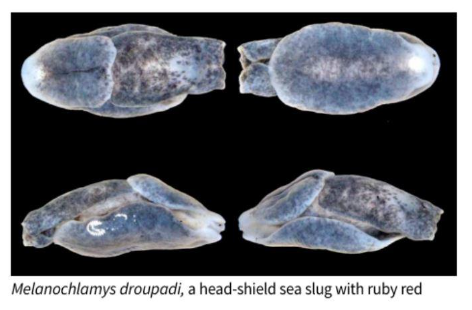
Characteristics of Melanochlamys Genus
- Morphological Features
- Body Description: The species belonging to the genus Melanochlamys exhibit a short, blunt, and cylindrical body.
- Dorsal Surface: Their dorsal surface is smooth, featuring two dorsal shields – the anterior cephalic and posterior shield.
- Physical Appearance
- Color and Size: These species are small and brownish-black, showcasing a distinctive ruby red spot at the hind end.
- Hermaphroditic Nature: Melanochlamys species are hermaphrodites.
- Reproductive Patterns
- Reproduction Period: The reproductive activities of these species are observed to occur between November and January.
- Adaptations for Burrowing
- Mucus Secretion: Melanochlamys droupadi, a representative species, secretes transparent mucus.
- Protective Function: This mucus shields the species from sand grains when crawling beneath smooth sand, rendering their bodies rarely visible.
- Geographical Distribution
- Typical Habitat: Species of the Melanochlamys genus are generally found in temperate regions of the Indo-Pacific Oceanic realm.
- Tropical Exceptions: Three species, namely Melanochlamys papillata from the Gulf of Thailand, Melanochlamys bengalensis from the West Bengal and Odisha coast, and Melanochlamys droupadi, are classified as truly tropical.
Source: TH
New Chairperson of Lokpal
In News: Former Supreme Court Justice Ajay Manikrao Khanwilkar was recently designated as the Lokpal's chairperson, ending a nearly two-year period during which the position remained unoccupied.
Appointment of Lokpal Members
- Presidential Appointment
- The President appoints the chairperson and members of the Lokpal.
- Selection Committee
- A Selection Committee is constituted to recommend candidates for the Lokpal.
- The Prime Minister serves as the chairperson of this Selection Committee.
- Composition of Lokpal
- Besides the chairperson, the Lokpal can comprise up to eight members.
- This includes four judicial members and four non-judicial members.
Source: TH
Doomsday Glacier
In News: Disclosing fresh insights into Antarctica's ominous "Doomsday Glacier," scientists have unveiled that the Thwaites Glacier has been experiencing ice loss since the 1940s.
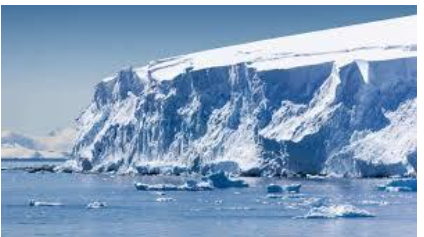
Doomsday Glacier - Thwaites Glacier: Understanding the Threat
- Geographical Location
- Thwaites Glacier, nicknamed the "Doomsday Glacier," is situated in the remote Amundsen Sea in West Antarctica.
- Physical Characteristics
- Size and Flow: It is a wide and fast-flowing glacier, approximately equivalent in size to Florida or Great Britain.
- Climate Sensitivity: Thwaites Glacier has garnered significant attention from the scientific community due to its high sensitivity to climate change.
- Global Significance
- Vulnerability: Identified as one of the most vulnerable glaciers globally concerning future sea-level rise.
- Annual Ice Loss: Satellite measurements reveal an alarming annual ice loss of nearly 50 billion tons, contributing significantly to the elevation of global sea levels.
- Current Contribution: Thwaites Glacier already contributes 4% to the global rise in sea levels.
- Sea-Level Rise Impact
- Potential Impact: Complete melting of Thwaites Glacier could result in a sea-level rise of approximately 65 centimeters (over 2 feet) globally.
- Buffer Function: The glacier serves as a crucial buffer, restraining neighboring glaciers that, if melted, could contribute up to three meters of additional sea-level rise.
- Concerns and Configuration
- Marine-Based Configuration: A critical concern lies in Thwaites' configuration, situated on land below sea level.
- Grounding Line Retreat: The glacier's grounding line, where it lifts off the land and starts floating on the sea, is retreating inland.
- Potential Instability: The marine-based situation allows the glacier to pass over deeper valleys as it retreats, triggering a phenomenon known as "marine ice sheet instability."
- Accelerated Melting: This process accelerates the discharge of ice into the sea, potentially exacerbating the glacier's melt.
Source: WION
Bharatiya Sakshya Adhiniyam
In News: The article delves into the proposed Bharatiya Sakshya Adhiniyam, highlighting alterations in criminal laws in India, particularly focusing on electronic evidence, set to replace the Indian Evidence Act of 1872.
Retained Provisions from IEA, 1872
- Admissible Evidence
- Classification: Evidence presented in legal proceedings must be admissible, classified as 'facts in issue' or 'relevant facts.'
- Facts in Issue: Pertaining to the existence, nature, or extent of rights, liabilities, or disabilities in legal matters.
- Relevant Facts: Facts pertinent to a given case, presented as documentary or oral evidence.
- A Proven Fact
- Court's Belief: A fact is deemed proven when the court believes its existence or considers it highly likely in the circumstances.
- Police Confessions:
- Inadmissibility: Confessions made to a police officer are inadmissible, with exceptions for facts discovered as a result of such confessions.
Key Changes in BSA, 2023
- Documentary Evidence
- Inclusion of Electronic Records: BSA recognizes electronic records as documents, expanding the definition beyond writings, maps, and caricatures.
- Primary and Secondary Evidence: Primary evidence includes originals, while secondary evidence encompasses various proofs, including oral and written admissions.
- Oral Evidence:
- Electronic Presentation: BSA allows oral evidence to be given electronically, facilitating testimony through electronic means.
- Admissibility of Electronic Records
- Inclusion: Electronic records are incorporated as admissible evidence, aligning with advancements in technology.
- Joint Trials
- Explanation Addition: BSA clarifies that trials involving accused absconding or not responding to arrest warrants are treated as joint trials.
Crucial Changes Introduced in BSA, 2023
- Illustration Addition: An illustration to the document definition specifies electronic records like emails, server logs, and locational evidence.
- Clarity on Primary (Electronic) Evidence
- Simultaneous Storage: BSA states that simultaneously stored video recordings in electronic form are considered primary evidence.
- Synchronisation with IT Act, 2000
- Inclusion of Terms: Section 63 aligns with the IT Act, 2000, by incorporating terms like 'semiconductor memory' for better clarity.
Issues Regarding Electronic Records
- Tampering of Electronic Records
- Supreme Court Recognition: The Supreme Court's concern about tampering highlights the need for safeguards.
- Ambiguity in Admissibility of e-Records
- Discretionary Admissibility: BSA's discretion for electronic evidence admissibility raises concerns, especially in cases of manipulation.
- Information Obtained in Police Custody
- Admissibility: Retention of the provision allowing admission of information obtained in police custody raises ethical concerns.
Steps for Effectiveness
- Standing Committee Recommendations
- Chain of Custody: Emphasizing secure handling and processing of electronic evidence through a proper chain of custody.
- Guidelines by Karnataka High Court
- Minimum Safeguards: Introducing guidelines for search and seizure, including the involvement of qualified forensic examiners.
- Incorporating EU Directive Proposal
- Uniform Standards: Considering EU's Directive Proposal for uniform minimum standards in using electronic evidence.
- Law Commission Recommendations, 2003
- Fair Treatment: Proposing safeguards against coercion, violence, and torture for facts discovered in custody.
- Malimath Committee Recommendations, 2003
- System Revamp: Recommending changes like introducing social welfare offences and replacing the adversarial system.
Conclusion
The Bharatiya Sakshya Adhiniyam signifies a modernized approach to criminal laws, particularly in handling electronic evidence. While clarity is introduced, concerns about tampering and ethical considerations persist. Effective implementation involves aligning with global standards, ensuring expert certifications, and addressing ethical and legal challenges in the digital realm.
|
UPSC Previous Year Questions Mains (2014) Q. We are witnessing increasing instances of sexual violence against women in the country. Despite existing legal provisions against it, the number of such incidences is on the rise. Suggest some innovative measures to tackle this menace. Mains (2019) Q. Mob violence is emerging as a serious law and order problem in India. By giving suitable examples, analyze the causes and consequences of such violence. |
Source: TH
Practice Questions - Current Affairs 02-03-2024
Q 1. Consider the following statements regarding Flood Management and Border Areas Programme (FMBAP) Scheme
- Flood Management Programme and River Management and Border Areas are the two centrally sponsored components of this scheme.
- For special category states the funding pattern is 90% by the centre and 10% by the states.
Select the correct answer using code given below:
- Both Statement-I and Statement-II are correct and Statement-II is the correct explanation for Statement-I
- Both Statement-I and Statement-II are correct and Statement-II is not the correct explanation for Statement-I
- Statement-I is correct but Statement-II is incorrect
- Statement-I is incorrect but Statement-II is correct
Q 2.Consider the following statements regarding Green Anaconda
- The green anaconda holds the title of the largest snake globally, in length and Black anaconda is at top in terms of weight.
- These are indigenous to South America, and are found east of the Andes and inhabit countries like Colombia, Venezuela.
- According to the IUCN Red List, the green anaconda is categorized as Vulnerable.
How many of the statements given above are correct?
- Only one
- Only two
- All three
- None
Q 3.Consider the following statements regarding National Green Tribunal (NGT) and the Central Pollution Control Board (CPCB)
- The NGT has been established by an Act whereas the CPCB has been created by an executive order of the Government
- The NGT provides environmental justice and helps reduce the burden of litigation in the higher courts whereas the CPCB promotes cleanliness of streams and wells, and aims to improve the quality of air in the country
Which of the statements given above is/are correct?
- 1 only
- 2 only
- Both 1 and 2
- Neither 1 nor 2
Q 4. Consider the following statements regarding aims of “Digital India” Plan of the Government of India
- Formation of India’s own Internet companies like China did
- Establish a policy framework to encourage overseas multinational corporations that collect Big Data to build their large data centers within our national geographical boundaries
- Connect many of our villages to the Internet and bring Wi-Fi to many of our schools, public places and major tourist centers
How many of the statements given above are correct?
- Only one
- Only two
- All three
- None
Q 5. With reference to Solar Maximum consider the following statements
- The starting of solar cycle, marked by the hemisphere flip, is known as the Solar Maximum
- As the sun approaches the solar maximum, observable phenomena include brilliant explosions, dark sunspots, loops of plasma, and swirls of super-hot gas
Which of the statements given above is/are not correct?
- 1 only
- 2 only
- Both 1 and 2
- Neither 1 nor 2
Q 6. Consider the following statements regarding Energy Sector of India
- India targets 500 GW of non-fossil energy, including 450 GW of renewable energy by 2045
- India aims for net zero emissions by 2070.
Select the correct answer using code given below:
- Both Statement-I and Statement-II are correct and Statement-II is the correct explanation for Statement-I
- Both Statement-I and Statement-II are correct and Statement-II is not the correct explanation for Statement-I
- Statement-I is correct but Statement-II is incorrect
- Statement-I is incorrect but Statement-II is correct
Q 7. Consider the following statements regarding Agreement at the UNFCCC Meeting in Paris in 2015:
- The Agreement was signed by all the member countries of the UN, and it will go into effect in 2017
- The Agreement aims to limit greenhouse gas emissions so that the rise in average global temperature by the end of this century does not exceed 2ºC or even 1.5ºC above pre-industrial levels
- Developed countries acknowledged their historical responsibility in global warming and committed to donate $ 1000 billion a year from 2020 to help developing countries to cope with climate change
How many of the statements given above are correct?
- Only one
- Only two
- All three
- None
Q 8. Consider the following statements regarding INSAT-3DS mission
- INSAT-3DS will be launched using the Geosynchronous Satellite Launch Vehicle F14 (GSLV F14)
- It is partially funded by the Ministry of Earth Sciences (MoES), it belongs to the Third Generation Meteorological Satellites in Geostationary Orbit
Which of the statements given above is/are correct?
- 1 only
- 2 only
- Both 1 and 2
- Neither 1 nor 2
Q 9. Consider the following statements regarding Bharatiya Bhasha Samiti
- Constituted by the Ministry of Home Affairs, Government of India in 2021, Bharatiya Bhasha Samiti functions as a High Powered Committee for the Promotion of Hindi Language.
- Bharatiya Bhasha Samiti is entrusted to provide guidance to the Ministry on matters related to the revitalization of language teaching, research, and its extension across various institutions in the country
- Shri Lal Bahadur Shastri National Sanskrit University (SLBSNSU), New Delhi, provides secretarial assistance and space for the committee
How many of the statements given above are correct?
- Only one
- Only two
- All three
- None
Q 10. With reference to Electoral Bonds consider the following statements
- These can be purchased from the State Bank of India (SBI), and could be donated to registered political parties for encashment within 14 days.
- Removal of donation limits facilitated crony capitalism in the donation ecosystem.
Which of the statements given above is/are not correct?
- 1 only
- 2 only
- Both 1 and 2
- Neither 1 nor 2
Q 11. Consider the following statements regarding Quasars
- The quasars have zero to very feeble luminosity owing to very dense nature which does not the light to pass and reflect.
- A quasar is an exceptionally active and luminous form of an active galactic nucleus
Select the correct answer using code given below:
- Both Statement-I and Statement-II are correct and Statement-II is the correct explanation for Statement-I
- Both Statement-I and Statement-II are correct and Statement-II is not the correct explanation for Statement-I
- Statement-I is correct but Statement-II is incorrect
- Statement-I is incorrect but Statement-II is correct
Q 12. Consider the following statements regarding International Union for Conservation of Nature and Natural Resources (IUCN) and the Convention on International Trade in Endangered Species of Wild Fauna and Flora (CITES)
- IUCN is an organ of the United Nations and CITES is an international agreement between governments
- IUCN runs thousands of field projects around the world to better manage natural environments
- CITES is legally binding on the States that have joined it, but this Convention does not take the place of national laws
How many of the statements given above are correct?
- Only one
- Only two
- All three
- None
Q 13. Consider the following statements regarding Odysseus Spacecraft
- Odysseus marks the First private attempt to land on the lunar surface.
- It is an integral part of NASA's Commercial Lunar Payload Services (CLPS) initiative and the broader Artemis campaign
Which of the statements given above is/are correct?
- 1 only
- 2 only
- Both 1 and 2
- Neither 1 nor 2
Q 14. Consider the following statements regarding El Nino and La Nina
- Typically, a surface low-pressure system forms in northern Australia and Indonesia, while a high-pressure system develops off the coast of Peru in normal conditions.
- El Nino is the warm phase, characterized by warmer water spreading from west to east in the equatorial Pacific Ocean
- A recent study indicates that an extraordinary El Nino event, prolonged by the influence of climate change, initiated an unusual pattern during the winter season of 2022-23 in India
How many of the statements given above are correct?
- Only one
- Only two
- All three
- None
Q 15. With reference to TN-SHORE consider the following statements
- TN-SHORE (Neithal Meetchi Iyakkam) is initiated to restore coastal resources in 14 districts of Tamil Nadu.
- It provides coastal communities with alternative livelihood opportunities, including ecotourism, waste management, and circular economy solutions
Which of the statements given above is/are not correct?
- 1 only
- 2 only
- Both 1 and 2
- Neither 1 nor 2
Q 16. Consider the following statements regarding Rhodamine-B
- The Tamil Nadu government has recently prohibited the sale and manufacturing of cotton candy within the state.
- Generally, Rhodamine-B is not prohibited in food due to its food friendly nature.
Select the correct answer using code given below:
- Both Statement-I and Statement-II are correct and Statement-II is the correct explanation for Statement-I
- Both Statement-I and Statement-II are correct and Statement-II is not the correct explanation for Statement-I
- Statement-I is correct but Statement-II is incorrect
- Statement-I is incorrect but Statement-II is correct
Q 17.Consider the following statements regarding Section 125 of the Criminal Procedure Code (CrPC)
- Section 125 of CrPC is a secular provision facilitating maintenance for wives, children, or parents unable to sustain themselves.
- Section 125 serves to prevent vulnerability by offering monetary support to those in need, avoiding destitution and poverty.
- The Allahabad High Court has consistently affirmed the right of divorced Muslim women to claim maintenance under Section 125 of CrPC.
How many of the statements given above are correct?
- Only one
- Only two
- All three
- None
Q 18.Consider the following statements:
- The Sustainable Development Goals were first proposed in 1972 by a global think tank called the ‘Club of Rome’
- The Sustainable Development Goals have to be achieved by 2030
Which of the statements given above is/are correct?
- 1 only
- 2 only
- Both 1 and 2
- Neither 1 nor 2
Q 19. Consider the following statements regarding National Commission of Schedule Caste
- The NCSC, a Statutory Body, established to safeguard Scheduled Castes (SCs) against exploitation.
- The NCSC consists of a Chairperson, Vice-Chairperson, and three additional Members, appointed by the President.
- The Commission cannot regulate its own procedure but possesses powers akin to a civil court during investigations.
How many of the statements given above are correct?
- Only one
- Only two
- All three
- None
Q 20. With reference to Model Code of Conduct consider the following statements
- Model Code of Conduct is divided into eight parts, covering various aspects of electioneering, publication of advertisements, and conduct during the electoral process
- It becomes effective when the EC announces the election schedule and remains in force until the announcement of results
Which of the statements given above is/are not correct?
- 1 only
- 2 only
- Both 1 and 2
- Neither 1 nor 2
Share the article
Edukemy’s Current Affairs Quiz is published with multiple choice questions for UPSC exams
MCQ
Get Latest Updates on Offers, Event dates, and free Mentorship sessions.

Get in touch with our Expert Academic Counsellors 👋
FAQs
UPSC Daily Current Affairs focuses on learning current events on a daily basis. An aspirant needs to study regular and updated information about current events, news, and relevant topics that are important for UPSC aspirants. It covers national and international affairs, government policies, socio-economic issues, science and technology advancements, and more.
UPSC Daily Current Affairs provides aspirants with a concise and comprehensive overview of the latest happenings and developments across various fields. It helps aspirants stay updated with current affairs and provides them with valuable insights and analysis, which are essential for answering questions in the UPSC examinations. It enhances their knowledge, analytical skills, and ability to connect current affairs with the UPSC syllabus.
UPSC Daily Current Affairs covers a wide range of topics, including politics, economics, science and technology, environment, social issues, governance, international relations, and more. It offers news summaries, in-depth analyses, editorials, opinion pieces, and relevant study materials. It also provides practice questions and quizzes to help aspirants test their understanding of current affairs.
Edukemy's UPSC Daily Current Affairs can be accessed through:
- UPSC Daily Current Affairs can be accessed through Current Affairs tab at the top of the Main Page of Edukemy.
- Edukemy Mobile app: The Daily Current Affairs can also be access through Edukemy Mobile App.
- Social media: Follow Edukemy’s official social media accounts or pages that provide UPSC Daily Current Affairs updates, including Facebook, Twitter, or Telegram channels.

